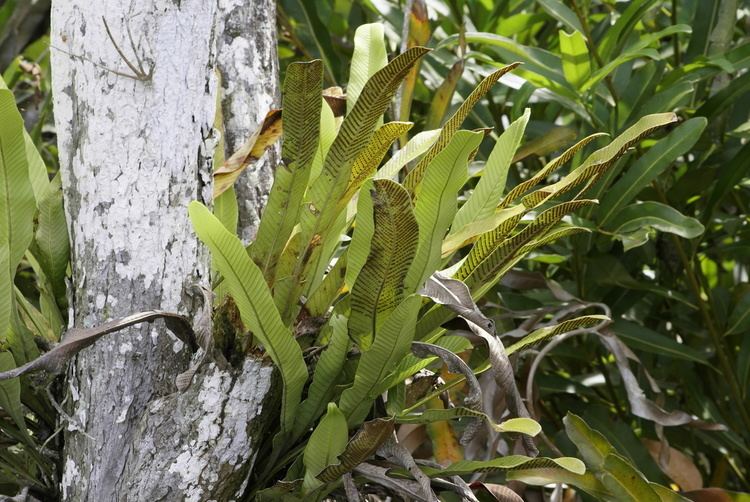Rank Species | Division Pteridophyta | |
 | ||
Class Polypodiopsida/Pteridopsida(disputed) Similar Niphidium, Campyloneurum, Pecluma, Microgramma, Campyloneurum phyllitidis | ||
Niphidium crassifolium commonly known as the graceful fern is a species of fern in the Polypodiaceae family found in Central and South America. It is predominantly an epiphytic, growing on other plants for example in the canopies of trees, but is occasionally grows on rocks or on the ground, particularly at higher altitude. It has a rhizome from which many fine rootlets covered in dark reddish-brown scales grow. Together they form a root basket, which when growing on trees, helps to trap leaf litter and dust, forming a nutrient-rich soil which holds water. Its leaves are simple in shape, 13–85 centimetres (5–33 in) long and 3–5 centimetres (1.2–2.0 in) wide and when dry are covered by a wax-like film. The sori are round and large, occurring in single rows between veins at the far end of the leaf.
Contents
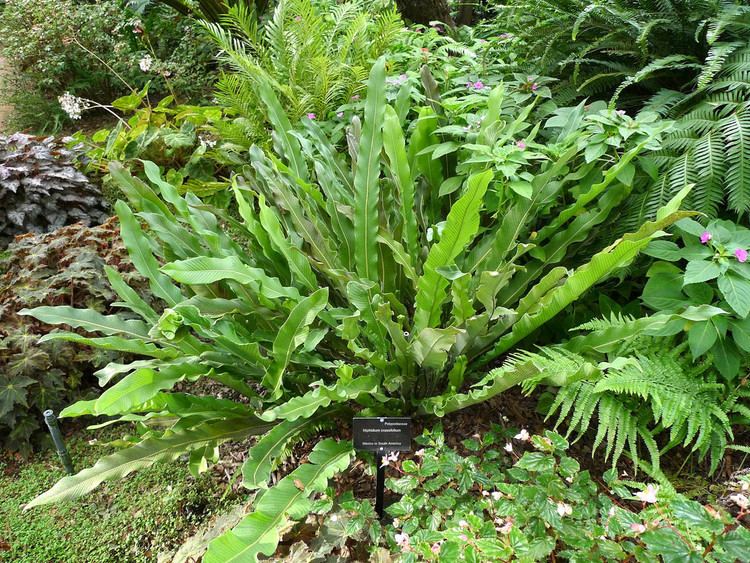
Taxonomy
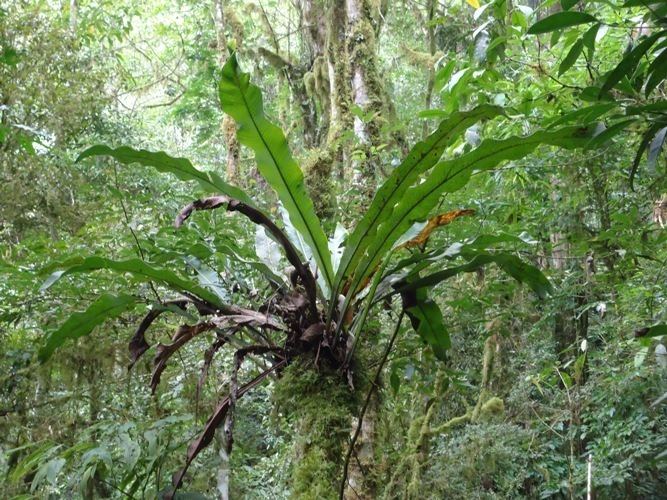
Niphidium crassifolium was first described by Carl Linnaeus in 1753 as Polypodium crassifolium. In 1972, David B. Lellinger moved the species into the genus Niphidium. It can be difficult to distinguish from N. albopunctatissimum but this species has narrower leaves and is mostly found growing on rocks or on the ground and has a different range.
Distribution
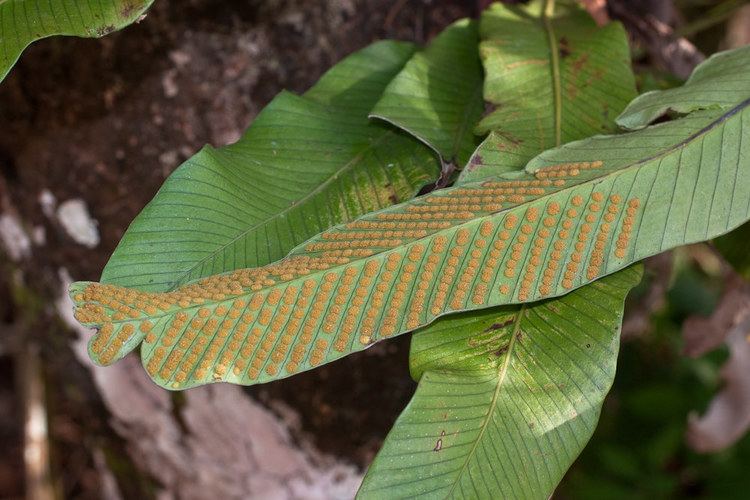
Niphidium crassifolium is found in Central and South America, from Mexico in the North to Ecuador in the South and including Panama, Peru, Brazil, French Guiana, Guyana and the West Indies. It grows at altitudes up to 1,100 metres (3,600 ft) above sea level and over a wide range of humidity. According to Thomas Croat, it is probably the most common fern found on Barro Colorado Island, Panama (BCI). Niphidium crassifolium is known to grow on Socratea exorrhiza, occurring on 12% of individuals on BCI. It is also known to grow on Platypodium elegans, Ceiba pentandra, Tabebuia guayacan and Anacardium excelsum.
Biochemistry
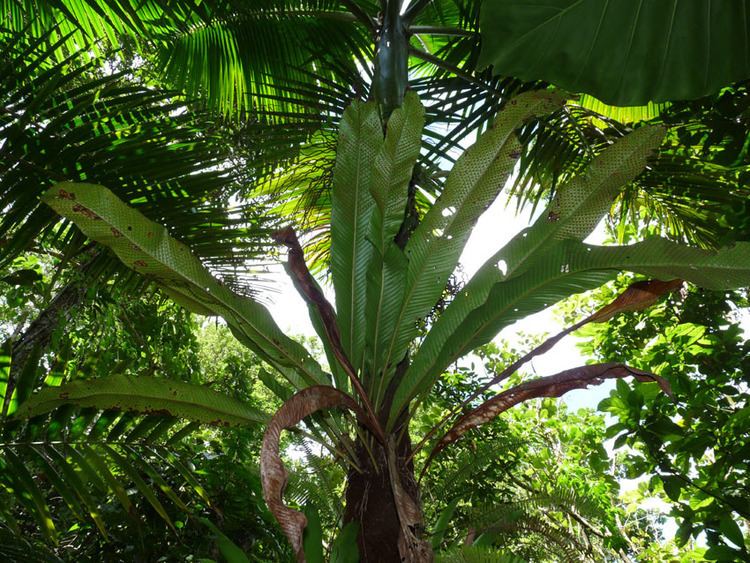
It uses crassulacean acid metabolism (CAM), where it stores some carbon dioxide produced by respiration at night and releases this for use in photosynthesis the next day, but the overall contribution of this is small compared to true CAM plants such as cacti. If drought stressed, the contribution of CAM increases from 2.7% of total carbon fixation to 10%. The production of gametophytes is determined by the light level rather than by a hormone.
Uses
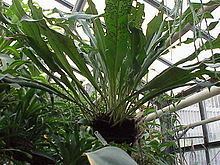
It can be cultivated, being described as growing well in well drained soil under medium light. It is reported to be able to survive consecutive days of freezing temperatures, down to −7 °C (19 °F). In Northern Peru the fresh stem is used in traditional medicine to treat inflammation of internal organs.
